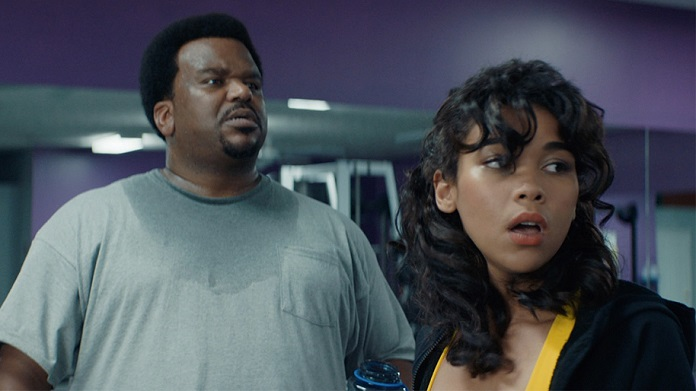Kim Kardashian had her baby. Swipe up. It’s there everywhere you look. Kanye West had another breakdown. Swipe up. A constant and consistent peer into the lives of friends, family, celebrities, and people you only peripherally know. That person you went to highschool with for two weeks got married. Swipe up. Even politicians have found it to be a powerful weapon, but also a fatal weakness. Donald Trump’s banned from Twitter. Swipe up. We see the media trying to capture the anxieties of social media, even as they rely on it. The central theme of the 2017 film Tragedy Girls was that the social-media age has desensitized and put new pressures on an entire generation; this theme has become even truer in the last few years.
At the time of Tragedy Girls’ release, it was 2017. We got used to our lives being dictated by the whim of politicians sending out whatever message was on their mind at the time. The power of Twitter was on full display. Facebook’s prevalence had expanded and the idea of “fake news” circulated through the world. We had seen full-scale revolutions in countries take place with these platforms as a major facet. Almost everybody had some kind of social media and the idea of getting off of them for a mental cleanse, or to avoid comparison and silly arguments wasn’t as prevalent as it is today. Snapchat was the primary place for any ultra-short content. Tik Tok hadn’t even been released yet.

Despite all of this, Tragedy Girls was still very relevant at the time. It correctly captured these feelings and summarized them in an entertaining film. It’s far less scary when it’s just entertainment. The idea of the two protagonists creating content around their real-life murders to build an online following didn’t seem like reality. You did have the occasional crimes being streamed on places like Facebook Live in 2017, like the murder of Steve Stephens. Terrorist groups shared their occassional murder of a journalist, as they had for over a decade by sending video to news outlets. Things like this happened occasionally, but it hadn’t yet become a strategy for the sick and depraved to gain viral fame. Reality imitated art in a very real, visceral way when Zachary Letham murdered his neighbor last year.
Letham had a long running conflict with his neighbors at the time. Their arguments started with his reckless driving around their neighborhood. Letham often incited these confrontations so that he could upload the result to Tik Tok. These videos of him provoking his neighbors generated millions of views, as he continuously mocked them. This culminated in a fight, in which Letham stabbed the patriarch of his neighbors’ family. Letham’s wife, for the record, recorded this whole fight. It seems as if, prior to police intervention, the original intent was to upload this to Tik Tok to garner even more views.
This is only one, granted arguably the most famous, of a handful of cases involving murder on Tik Tok. The plot of Tragedy Girls has almost become real-life. It’s a scary thing to think about. People murdering others for virality. In the case of Letham, social media actively encouraged him to escalate his behavior. They continued to get more and more views. The more serious the confrontation, the more views he appeared to get. And, with influencers making millions of dollars, this is not only a chance for fame, but a money making scheme. And how would kids separate the wrong from the right? They idealize these people and see it as a dream life, similarly to how Brad Pitt was once admired. Or, even further back, how J.D. Salinger was admired. But there are gulfs in the differences between them and the global Tik Tok phenoms. They had real skills and, this is important, didn’t make their living by hurting others. One might say making viral content is a skill. In many cases, it is. People dancing on Tik Tok, or making music, or shooting sketches are legitimately cashing in on their skills and the fruits of honest labor and creativity. Somebody provoking their neighbor? Not so much.
So Tragedy Girls was an extreme example at the time of its release regarding behavior driven by social media. It was a stark warning. A work of fiction. But now it feels less like a teen comedy-horror movie and more like an Orwellian warning. These things really do happen. With even more of the world getting regular access to the internet, and being able to access it through the tips of their fingers on smartphones anywhere, it leaves one to wonder: are we approaching a time where this behavior becomes more normalized? Only time and, hopefully, a strategic legislature that balances our rights and our protections delicately will tell.
